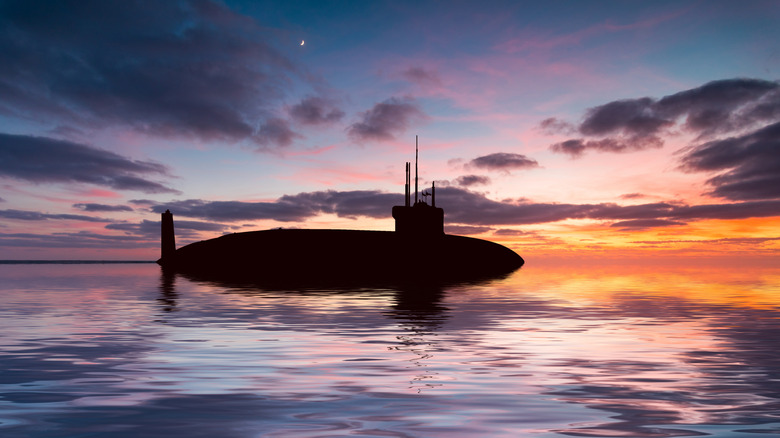Why Do Military Submarines Use Red Lights?
The deadliest attack submarines in the U.S. Navy thrive in the darkness of the ocean's depths, but every once in a while they need to rise to periscope depth so the crew can get a lay of the land. Submarines are most vulnerable while using the periscope, so every second counts. Ballistic missile submarines especially need to be able to travel through the oceans unnoticed — the more time they spend at periscope depth, the more likely it is they'll be detected by adversaries. They're a part of the United States nuclear triad and without them, the country's national security could be compromised.
With red light illuminating the submarine's interior rather than a bright fluorescent, the human eye has an easier time adjusting to the light on the ocean's surface. Red light has the longest wavelength, making it less intense on the human eye. It's easier for a submarine crew's night vision to adjust to red light rather than a typical white light. When the eyes detect low light for longer than 20 minutes, the body produces the rhodopsin chemical, which triggers our night vision. When the eyes are exposed to bright light, the rhodopsin decays almost immediately. Red light, on the other hand, doesn't stop rhodopsin production. Moreover, the military uses red lights on submarines to help the crew's sleep patterns, making them more alert when they need to be alert and tired when it's time to sleep. If they get a good amount of sleep, they can be more alert during their shift.
Effects of red light on sleep
It's no secret that different wavelengths on the light spectrum have an effect on the human sleep pattern. How often have you heard to avoid blue light sources at night before you go to sleep? That's because blue light suppresses the production of melatonin, a hormone our bodies produce when it's time to sleep. The likelihood of anyone abiding by this is slim to none since it's TVs, computer monitors, and smartphones that emit blue light.
Red light has the opposite effect. It doesn't suppress melatonin production or disrupt the circadian rhythm, so sailors can get to sleep when they need to. However, red light doesn't exactly promote healthy sleep; it just doesn't affect it. The only thing that would be better than red light would be no light, but submarines can't operate in absolute darkness. It's important to note that this doesn't mean the Navy is installing red colored bulbs in its submarines. The light being emitted has to emit a red wavelength of light, not simply be colored red.

